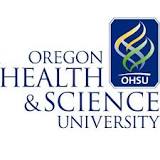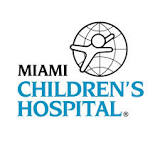Infant Aphakia Treatment Study (IATS)
| Status: | Active, not recruiting |
|---|---|
| Conditions: | Ocular |
| Therapuetic Areas: | Ophthalmology |
| Healthy: | No |
| Age Range: | Any |
| Updated: | 4/17/2018 |
| Start Date: | December 2004 |
| End Date: | August 31, 2019 |
The primary purpose is to determine whether infants with a unilateral congenital cataract are
more likely to develop better vision following cataract extraction surgery if they undergo
primary implantation of an intraocular lens or if they are treated primarily with a contact
lens. In addition, the study will compare the occurrence of postoperative complications and
the degree of parental stress between the two treatments.
more likely to develop better vision following cataract extraction surgery if they undergo
primary implantation of an intraocular lens or if they are treated primarily with a contact
lens. In addition, the study will compare the occurrence of postoperative complications and
the degree of parental stress between the two treatments.
Intraocular lenses are now a commonly accepted treatment for cataracts in older children and
are used increasingly in younger children and infants. Intraocular lenses are superior to
contact lenses in that they more closely replicate the optics of the crystalline lens, do not
require daily ongoing care, and ensure at least a partial optical correction at all times.
The simplicity and improved visual outcome of an intraocular lens correction may make caring
for a child with a unilateral congenital cataract less stressful for parents. However,
contact lenses remain the accepted treatment for children under 1 year of age due to concerns
about the long-term safety of intraocular lenses and the potential for a large myopic shift
developing in these eyes as they grow. Contact lenses provide excellent visual results in
infants treated for bilateral congenital cataracts; however, two-thirds of infants treated
with contact lenses for unilateral congenital cataracts remain legally blind in their aphakic
eye. These poor visual outcomes are usually ascribed to competition from the sound eye and
poor compliance with patching and contact lens wear regimens. Data from our pilot study and
the literature suggest that superior visual results can be obtained if an intraocular lens is
used to correct unilateral aphakia during infancy, but these eyes will experience more
complications. Intraocular lenses will be increasingly implanted in infants regardless of
whether or not we perform this trial. By performing this clinical trial, we can determine if
the higher rate of complications with intraocular lenses is offset by improved visual outcome
and decreased parenting stress.
The Infant Aphakia Treatment Study (IATS) is a multi-center randomized clinical trial
comparing intraocular lens and contact lens correction for monocular aphakia. Infants will be
enrolled over a 4 year period. Infants 28 to 210 days of age with a visually significant
cataract in one eye are eligible. Cataract surgery will be performed in a standardized
fashion by a surgeon who has been certified for the study. Surgery consists of a lensectomy,
posterior capsulotomy, and anterior vitrectomy. Infants will be randomized at the time of
surgery to one of two treatment groups. Infants randomized to the intraocular lens group will
have an intraocular lens implanted into the capsular bag. Spectacles will subsequently be
used to correct the residual refractive errors. Infants randomized to the contact lens group
will be fitted with a contact lens immediately after surgery. Both groups will receive the
same patching therapy and follow-up. All children will be examined by Investigators at fixed
intervals using standard protocols with the major endpoint assessed at age 12 months by a
Traveling Vision Examiner.
We are currently in a continuation of this project (beyond 5 years) in order to assess which
of these patients have glaucoma or glaucoma suspect at age 10.5 years. Our goal is to
understand which type of initial optical correction, an IOL or a CL, results in the best
long-term visual outcome following unilateral congenital cataract surgery during infancy. Our
central hypothesis is that primary IOL implantation will result in a better visual outcome.
The rationale for this proposal is that final visual acuity cannot be determined by 5 years
of age and the recommendation for early treatment can only be substantiated by adequate
long-term assessment in this unique cohort. We chose a follow-up to age 10.5 years because it
will provide a more accurate assessment of visual acuity and will allow us to diagnosis most
cases of glaucoma.
are used increasingly in younger children and infants. Intraocular lenses are superior to
contact lenses in that they more closely replicate the optics of the crystalline lens, do not
require daily ongoing care, and ensure at least a partial optical correction at all times.
The simplicity and improved visual outcome of an intraocular lens correction may make caring
for a child with a unilateral congenital cataract less stressful for parents. However,
contact lenses remain the accepted treatment for children under 1 year of age due to concerns
about the long-term safety of intraocular lenses and the potential for a large myopic shift
developing in these eyes as they grow. Contact lenses provide excellent visual results in
infants treated for bilateral congenital cataracts; however, two-thirds of infants treated
with contact lenses for unilateral congenital cataracts remain legally blind in their aphakic
eye. These poor visual outcomes are usually ascribed to competition from the sound eye and
poor compliance with patching and contact lens wear regimens. Data from our pilot study and
the literature suggest that superior visual results can be obtained if an intraocular lens is
used to correct unilateral aphakia during infancy, but these eyes will experience more
complications. Intraocular lenses will be increasingly implanted in infants regardless of
whether or not we perform this trial. By performing this clinical trial, we can determine if
the higher rate of complications with intraocular lenses is offset by improved visual outcome
and decreased parenting stress.
The Infant Aphakia Treatment Study (IATS) is a multi-center randomized clinical trial
comparing intraocular lens and contact lens correction for monocular aphakia. Infants will be
enrolled over a 4 year period. Infants 28 to 210 days of age with a visually significant
cataract in one eye are eligible. Cataract surgery will be performed in a standardized
fashion by a surgeon who has been certified for the study. Surgery consists of a lensectomy,
posterior capsulotomy, and anterior vitrectomy. Infants will be randomized at the time of
surgery to one of two treatment groups. Infants randomized to the intraocular lens group will
have an intraocular lens implanted into the capsular bag. Spectacles will subsequently be
used to correct the residual refractive errors. Infants randomized to the contact lens group
will be fitted with a contact lens immediately after surgery. Both groups will receive the
same patching therapy and follow-up. All children will be examined by Investigators at fixed
intervals using standard protocols with the major endpoint assessed at age 12 months by a
Traveling Vision Examiner.
We are currently in a continuation of this project (beyond 5 years) in order to assess which
of these patients have glaucoma or glaucoma suspect at age 10.5 years. Our goal is to
understand which type of initial optical correction, an IOL or a CL, results in the best
long-term visual outcome following unilateral congenital cataract surgery during infancy. Our
central hypothesis is that primary IOL implantation will result in a better visual outcome.
The rationale for this proposal is that final visual acuity cannot be determined by 5 years
of age and the recommendation for early treatment can only be substantiated by adequate
long-term assessment in this unique cohort. We chose a follow-up to age 10.5 years because it
will provide a more accurate assessment of visual acuity and will allow us to diagnosis most
cases of glaucoma.
Inclusion Criteria:
- Visually significant unilateral congenital cataract (central opacity equal to or
greater than 3 mm in size).
- Cataract surgery performed when the patient is 28 to 210 days of age and at least 41
post-conceptional weeks.
Exclusion Criteria:
- The cataract is known to be acquired from trauma or as a side-effect of a treatment
administered postnatally such as radiation or medical therapy.
- A corneal diameter less than 9 mm measured in the horizontal meridian using calipers.
- An intraocular pressure of 25 mm Hg or greater in the affected eye measured with a
Perkins tonometer, tonopen, or pneumatonometer.
- Persistent fetal vasculature (PFV) causing stretching of the ciliary processes or a
tractional retinal detachment.
- Active uveitis or signs suggestive of a previous episode of uveitis such as posterior
synechiae or keratic precipitates.
- The child is the product of a pre-term pregnancy (<36 gestational weeks). Screening
for prematurity will be based on the clinician's best assessment of gestational age.
If a physician is uncertain regarding the gestational age, review of medical records
or contact with the pediatrician and/or obstetrician should be used to confirm
gestational age at delivery. Unless a clinician is uncertain as to whether a child was
born at less than 36 weeks or not, confirmation of gestational age via medical record
review may be delayed until after enrollment.
- Retinal disease that may limit the visual potential of the eye such as retinopathy of
prematurity.
- Previous intraocular surgery.
- Optic nerve disease that may limit the visual potential of the eye such as optic nerve
hypoplasia.
- The fellow eye has ocular disease that might reduce its visual potential.
- The child has a medical condition known to limit the ability to obtain visual acuity
at 12 months or 4 years of age.
- Refusal by the Parent/Legal Guardian to sign an informed consent or to be randomized
to one of the two treatment groups.
- Follow-up of the child is not feasible because the child would not be able to return
for regular follow-up examinations and the outcome assessments (e.g. transportation
difficulties, relocation, etc.).
We found this trial at
13
sites
Click here to add this to my saved trials
Miami Children's Hospital Welcome to Miami Children
Click here to add this to my saved trials
Univ of Minnesota With a flagship campus in the heart of the Twin Cities, and...
Click here to add this to my saved trials
3181 Southwest Sam Jackson Park Road
Portland, Oregon 97239
Portland, Oregon 97239
503 494-8311

Oregon Health and Science University In 1887, the inaugural class of the University of Oregon...
Click here to add this to my saved trials
Click here to add this to my saved trials
171 Ashley Avenue
Charleston, South Carolina 29425
Charleston, South Carolina 29425
843-792-1414

Medical University of South Carolina The Medical University of South Carolina (MUSC) has grown from...
Click here to add this to my saved trials
Cleveland Clinic Foundation The Cleveland Clinic (formally known as The Cleveland Clinic Foundation) is a...
Click here to add this to my saved trials
Click here to add this to my saved trials
Click here to add this to my saved trials
Click here to add this to my saved trials
Indiana University Medical Center Indiana University Health is Indiana
Click here to add this to my saved trials
Vanderbilt University Vanderbilt offers undergraduate programs in the liberal arts and sciences, engineering, music, education...
Click here to add this to my saved trials
Click here to add this to my saved trials




